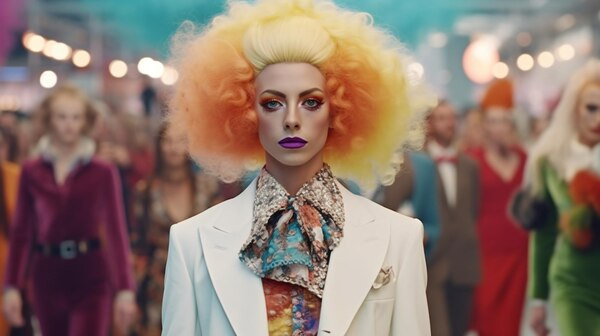The Evolution of American Fashion Trends
American fashion has undergone a remarkable transformation over the decades, reflecting the country's dynamic cultural, social, and economic changes. From the early 20th century to the contemporary era, fashion trends in the United States have evolved, with each decade producing distinctive styles that encapsulate the spirit of their time.

In the early 1900s, American fashion was heavily influenced by European styles, particularly from Paris and London. Women wore long skirts and corsets, while men donned tailored suits. As the century progressed, the roaring 1920s marked a significant shift with the flapper movement. Women embraced shorter hemlines, loose-fitting dresses, and bobbed hairstyles, representing newfound freedom and rebellion against traditional norms. Men's fashion also became more relaxed, with the popularization of jazz age suits.
The Great Depression of the 1930s brought about more conservative styles, with fashion becoming more modest and practical due to economic constraints. However, the Hollywood glamour of the time influenced people to aspire for elegance, visible in the bias-cut gowns and structured suits that were popularized by film stars.
World War II in the 1940s further transformed American fashion due to resource rationing, leading to simpler designs and multifunctional wardrobes. Despite these constraints, the war era gave rise to iconic styles such as the utilitarian "Rosie the Riveter" look for women, characterized by trousers and workwear-inspired outfits.
The post-war 1950s saw a return to opulence, with Christian Dior's "New Look" influencing American fashion. Full skirts, fitted waists, and an emphasis on femininity were prevalent. This decade is also remembered for the rise of casual wear, as jeans and T-shirts became popular among American youth, paving the way for the burgeoning teenage culture.
The 1960s broke away from tradition, characterized by an explosion of color and experimentation. The mod fashion movement, with its bold patterns and mini skirts, was in full swing. This era also saw the influence of countercultural elements, including the hippie movement which embraced bohemian styles, ethnic influences, and a mix of vibrant prints.
In the 1970s, American fashion was all about self-expression and liberation. The disco craze introduced shiny fabrics and body-hugging silhouettes while the punk movement brought anti-fashion aesthetics such as ripped clothing and leather jackets. These contrasting styles symbolized the decade’s diverse social movements and changing ideals.
The 1980s were defined by excess and extravagance. Oversized silhouettes, power suits with shoulder pads, and neon colors became emblematic of the decade. The influence of celebrities and pop culture was at its peak, with music icons like Madonna and Michael Jackson setting trends that infiltrated everyday fashion.
The 1990s countered the previous decade's extravagance with a shift towards minimalism and grunge. Fashion became more relaxed and understated, with iconic items like flannel shirts, combat boots, and slip dresses making their mark. The "heroin chic" look dominated high fashion, emphasizing androgynous styles and understated beauty.
With the turn of the new millennium, the 2000s were characterized by "mash-up" fashion, where different styles and influences merged. Denim was a major staple, alongside a resurgence of 1980s and 1990s influences with a modern twist. Fast fashion became a significant force, offering affordable runway trends to the masses in real-time.
In recent years, American fashion has seen a movement towards sustainability and inclusivity. There is a growing focus on ethical fashion, with brands emphasizing eco-friendly materials and production processes. Social media platforms have democratized fashion, allowing for a wider range of voices and styles to emerge, pushing for representation and diversity within the industry.
As American fashion continues to evolve, its future is likely to be shaped by technological advancements and shifting cultural landscapes. The constant flux of trends reflects the country's ever-changing identity and the ongoing dialogue between past and present styles.